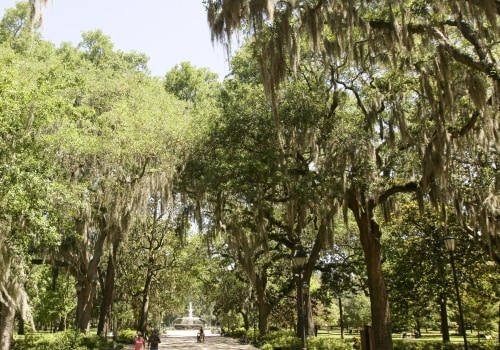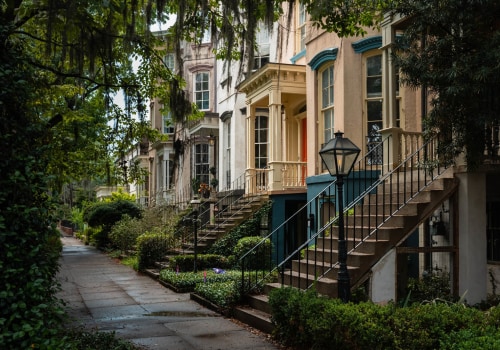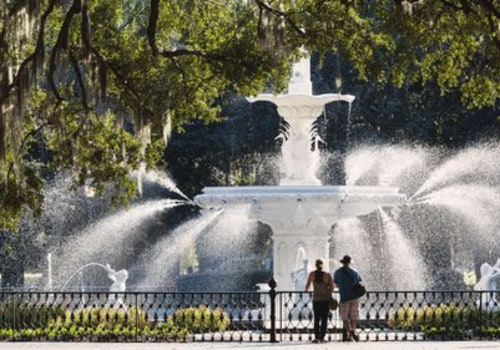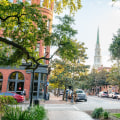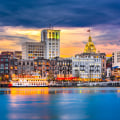As the oldest city in the state of Georgia, Savannah has a long and colorful history filled with interesting characters and beautiful places. From manicured parks and horse-drawn carriages to ornate pre-war architecture, it's no wonder that Savannah is one of the most visited cities in the South. This precious monument is known for its outstanding role as a refuge for slaves and African Americans throughout history. The First African Baptist Church served as a stop on the underground railroad, and you can still see the holes in the floorboards that were used to ventilate hidden spaces where slaves traveled.
On February 12, 1733, General James Oglethorpe and the colonists from the ship Anne landed at Yamacraw Bluff and were greeted by Tomochichi, the Yamacraws, and Indian traders John and Mary Musgrove. Mary Musgrove used to act as an interpreter. The city of Savannah was founded on that date, along with the colony of Georgia. In 1751, Savannah and the rest of Georgia became a royal colony and Savannah became the colonial capital from Georgia.
A thriving seaport throughout the 19th century, Savannah was the sixth most populated city in the Confederacy and the primary objective of General William T. Early on December 21, 1864, local authorities negotiated a peaceful surrender to save Savannah from destruction, and Union troops entered the city at dawn. For years, Savannah was home to Union Camp, which housed the world's largest paper mill. The plant is now owned by International Paper and remains one of Savannah's major employers.
Savannah is also home to Gulfstream Aerospace, a manufacturer of private jets, as well as several other large industrial interests. Morris Multimedia, a newspaper and television company, is also based in Savannah. Beyond its architectural importance as the largest historically restored urban area in the country, the city of Savannah has a rich and growing performing arts scene, offering cultural events throughout the year. The Savannah International Trade and Convention Center is located on Hutchinson Island, opposite downtown Savannah and surrounded by the Savannah River.
The Belles Ferry connects the island to the mainland, as does the Talmadge Memorial Bridge. The Savannah Civic Center, on Montgomery Street, hosts more than 900 events each year. Savannah has numerous historic places of worship. Founded in 1733, with the establishment of the colony of Georgia, Christ Church (Episcopal) is the largest continuous Christian congregation of Georgia.
Early rectors include Methodist evangelists John Wesley and George Whitefield. Located on the original site in Johnson Square, Christ Church continues to be an active congregation. The Independent Presbyterian Church, which was founded in 1755, is located near Chippewa Square. The current sanctuary of the church (the third) dates back to the early 1890s.
The opulent buildings that succumbed to the fire include the mansions of Bonaventure Plantation and Greenwich Plantation. Colonial Park Cemetery was the city's main cemetery for much of the 18th century, when Georgia was a British colony. Laurel Grove Cemetery, with the graves of many Confederate soldiers and African-American slaves, was the main municipal cemetery in Savannah during the 19th century. Bonaventure Cemetery is a former plantation and the final resting place of some illustrious inhabitants of Savannah.
Also located in Savannah are the Mordecai Sheftall Cemetery and the Levi Sheftall Family Cemetery, which date back to the second half of the 18th century. Some parts of the East Coast Greenway, a 5,000-kilometer (3,000 mile) long trail system from Maine to Florida, run through Savannah. Savannah is also home to most of the schools in the Chatham County school district, the Savannah-Chatham County Public Schools. Among the most prominent high schools the following are found in Savannah-Chatham County.
Public schools are indicated with an asterisk. Amtrak operates a passenger terminal in Savannah for its Palmetto and Silver Service trains, which run between New York City and Miami. Two southbound and three northbound trains make daily stops at the Savannah terminal. Savannah is a southern city par excellence located on the Georgia coast, approximately 4 hours from Atlanta.
Savannah is the most haunted city in the United States, but you probably wouldn't imagine that one of the best places to drink beer in the city is its most haunted place. In Franklin Square is the Savannah Haiti Monument, which commemorates the heroic efforts of the Chasseurs-Volontaires of Saint-Domingue in the siege of Savannah in 1779 and for the independence of the United States. Founded in 1733, Savannah is one of the oldest cities in the country and was one of the first planned cities. Because of its location on Georgia Bay (the arc of the Atlantic coast in Georgia and North Florida) and the tendency of hurricanes to curve back to the coast, Savannah has a lower risk of hurricanes than other coastal cities, such as Charleston (South Carolina).
Savannah is an ancient city known throughout the country for its beautiful coastal landscapes, well-preserved architecture, and rich and vibrant history. Savannah's main television stations are WSAV-TV, channel 3 (NBC); WTOC-TV, channel 11 (CBS); WJCL, channel 22 (ABC); and WTGS, channel 28 (Fox). Despite these difficulties and the added burden of prejudice, the freed slaves who remained in Savannah built a thriving community, with its own churches, schools and economic strength. The Port of Savannah, manufacturing industry, military and tourism have become Savannah's four main economic engines in the 21st century.
Georgia's Ogeechee River flows into the Atlantic Ocean about 16 miles (26 km) south of downtown Savannah and forms the city's southern boundary. There's no better way to explore the Savannah River than sailing aboard the Savannah Riverboat. Savannah has one of the busiest ports in the United States, but you won't be overwhelmed as you walk through moss-and-oak-covered streets and squares filled with historic houses that look like a movie set. Every year, Savannah attracts millions of visitors to its cobblestone streets, parks and notable historic buildings.
In the 19th century, the port of Savannah became one of the busiest in the United States, and Savannahs had the opportunity to consume some of the best products in the world, imported by foreign merchants.
